I spent several years studying ancient okinawan manuscript Bubishi. This article is part 1. of my interpretation and bunkai applications. At least it shows diversity of original okinawan self defense method that will later be famous under new name – “Karate”.
KEN TSUKI
nose smash with a fist
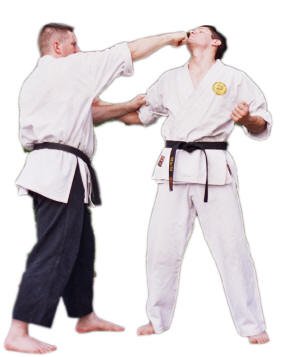 This is very basic karate technique. One should keep in mind that this punch is not same as punch in sport karate.
This is very basic karate technique. One should keep in mind that this punch is not same as punch in sport karate.
In modern karate it is very often used for thrust to opponent trunk, however this is not very effective in self-defense. In old karate fist is aimed at opponents nose.

Tips: Grab opponent’s arm and pull it. This is called hiki-te. You will control your opponent and make your strike much more powerful.
Reference kata: Seisan
 KINTEKI GERI
KINTEKI GERI
kick to groins
Kinteki geri is performed always with your front leg. It is fast and accurate, whipping kick.
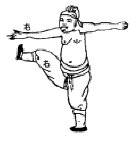
Tips: Step a side and grab opponent’s arm for better control.
Reference kata: Seisan, Kushanku, Anan
 SHUTO UCHI
SHUTO UCHI
knife-hand to opponents throat
 Knife hand is one of primary and most effective weapons of old okinawa karate. This technique is can be very dangerous when aimed at opponents throat. Also, this strike can be used to smash opponents face and limbs.
Knife hand is one of primary and most effective weapons of old okinawa karate. This technique is can be very dangerous when aimed at opponents throat. Also, this strike can be used to smash opponents face and limbs.
Tips: Parry opponents attack with your other hand and counterattack simultaneously.
Reference kata: Kushanku
 SAGURI-TE
SAGURI-TE
eye gouge
In self-defense, you can easily gouge opponents eyes with your fingers. This is done with your front hand, because you can cover more space with your front hand.
Tips: Don’t be stiff. This technique does not require any power. Speed and accuracy are all you need.
Reference kata: Passai, Kushanku
 HIZA GERI
HIZA GERI
knee smash
Knee is one of most formidable weapons of karate. You don’t need too much practice to understand its use.
Knee is used to smash opponents groin and sometimes, depending of situation, when aimed at opponent head it will easily knock him down.
Tips: You must use your hands (hiki-te) to control and pull opponent into knee smash. Without your hands hiza geri is almost useless.
Reference kata: Passai
 EMPI UCHI
EMPI UCHI
elbow smash
Elbow and knee are best used in close distance. This is prime weapon if stronger opponent tries to grab you. Knee and elbow can be very devastating with very little practice.
Elbow strikes are very powerful. It is used to smash opponents face or to break his ribs.
 Tips: You must use your rear hand to pull and control your opponent. Hiki-te is most important here. Do not use your whole forearm to smash. Focus all your power at the elbow top (olecranon).
Tips: You must use your rear hand to pull and control your opponent. Hiki-te is most important here. Do not use your whole forearm to smash. Focus all your power at the elbow top (olecranon).
Reference kata: Passai, Kushanku, Anan
 USHIRO EMPI UCHI
USHIRO EMPI UCHI
elbow smash
This is similar technique. It is used as defense against attack from behind. Grab your opponent arm and smash his ribs with your elbow.

Tips: You should remember that all elbow techniques require good stance. If you have firm stance, you will be able to focus all your mass into this strike.
Reference kata: Kururunfa
 URAKEN UCHI
URAKEN UCHI
backfist
This technique is not very well understood today. Your wrist must be relaxed. All power is generated through whipping motion. Strike is always aimed at opponent nose and upper lip.
This technique is very effective in close distance.
Tips: It is mistake to use entire flat surface of backfist. You should use your knuckles as point of contact.
Reference kata: Passai, Kushanku
 TEISHO UCHI
TEISHO UCHI
palm smash
Palm strike to opponents face is very effective. You should always use your rear hand to parry attack.
Tips: This is very quick technique. Point here is to smash opponents nose.
Reference kata: Anan, Seisan
 NUKI-TE
NUKI-TE
throat grab
In many cases, this technique is shown as variation of palm strike in kata.

Tips: Instead of throat you can easely grab his hair, ear or press your thumb under his chin.
Reference kata: Anan, Seisan & Kushanku
 KOMA NAGE
KOMA NAGE
elbow lock
Gichin Funakoshi used term “koma nage” in his Karate do kyohan. Similar drawing also exists in Bubishi.
Koma nage can be used as counter to wrist grab, also it is very effective controlling technique used after shocking strike or kick.

Tips: Grab opponents cloth instead of just pressing. This is more secure method.
Reference kata: Anan, Passai, Kushanku
 KUBIWA
KUBIWA
head manipulation take down
Gichin Funakoshi named this technique “kubiwa” – “around the neck”. Similar drawing also exists in Bubishi.
Kubiwa is easy to learn technique. It is logical choice when you parry opponents kick or strike on outer side.
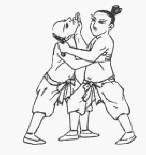
Tips: Grab opponent’s hair and press your hand against his nose, using your fingers to poke his eyes.
Reference kata: Passai, Kushanku
 SAKUTSACHI
SAKUTSACHI
to hammer down
Gichin Funakoshi named this technique “sakutsachi” – “to hammer down”. Similar drawing also exists in Bubishi.
This technique requires a lot of strength. You can use this throw as an escape from
Tips: Attempt to reach with your hand between his legs as far as it is possible. Try to hold his belt on a back.
Reference kata: Kushanku
 KATAWAGURUMA
KATAWAGURUMA
“great wheel”
In Karate do kyohan this technique is called katawaguruma and I suppose that this name comes from Japan.
This technique also requires a lot of strength. This throw is best suitable when opponent tries to push, choke or wrestle with you.
Tips: Arm press against his groin will help you lift him much easier.
Reference kata: Kushanku, Anan
 YORIDAMA
YORIDAMA
leg holding throw
In Karate do kyohan this technique is called yoridama, but unfortunately it is demonstrated completely wrong.

Yoridama is used as defense against a kick. You should catch a leg with one arm and parry his punch with other. This technique is also found in ancient manuscript Bubishi.
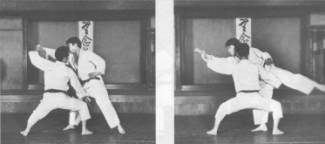 Tips: Don’t try to sweep him down (this is sport karate version), instead perform quick counter clockwise turn with your rear leg. This will throw your opponent on head.
Tips: Don’t try to sweep him down (this is sport karate version), instead perform quick counter clockwise turn with your rear leg. This will throw your opponent on head.
Reference kata: Passai
 TANI OTOSHI
TANI OTOSHI
shoulder throw
Tani otoshi is one of the most popular throws in Judo. Illustration is found in Karate do Kyohan and in Bubishi.

Best situation to use this throw is when opponent is behind your back trying to choke you or when he is in front of you holding your hair, neck or sleeves.
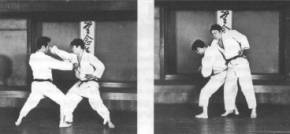 Tips: You can throw your opponent in several different ways – over your shoulder, over your hips or just pull him over your legs.
Tips: You can throw your opponent in several different ways – over your shoulder, over your hips or just pull him over your legs.
Reference kata: Passai
 SHIME
SHIME
choke hold
I had an opportunity to feel this hold on several seminars with Okinawan teachers. You can perform it when you are behind your opponent or when you are at his side. You should always use shock strike before attempting to make this hold.
Tips: Hide your face. Opponent will try to scratch you or hit you.
Reference kata: Passai
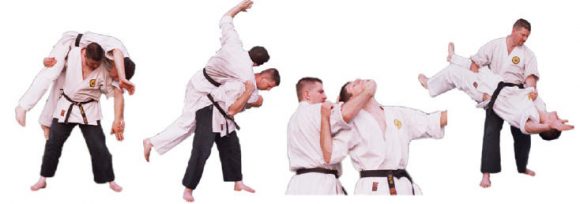
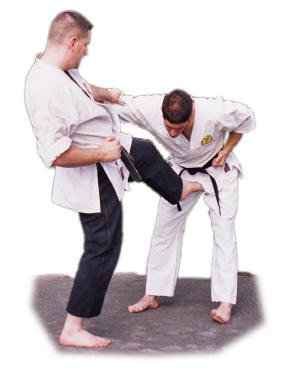 KINTEKI GERI
KINTEKI GERI SHUTO UCHI
SHUTO UCHI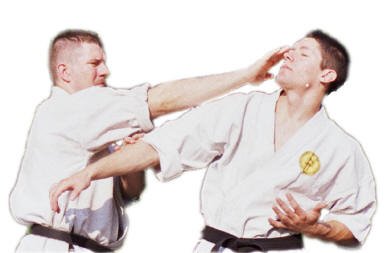 SAGURI-TE
SAGURI-TE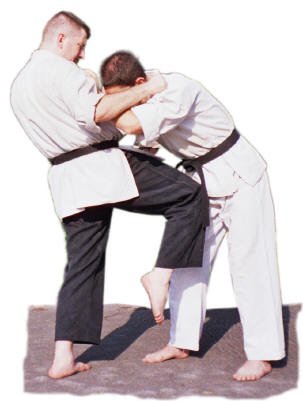 HIZA GERI
HIZA GERI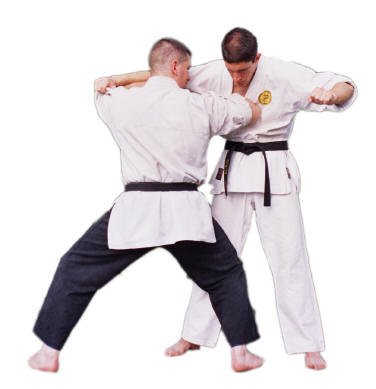 EMPI UCHI
EMPI UCHI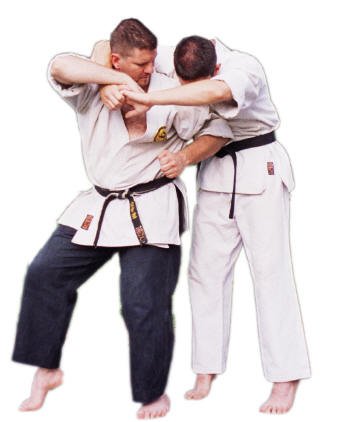 USHIRO EMPI UCHI
USHIRO EMPI UCHI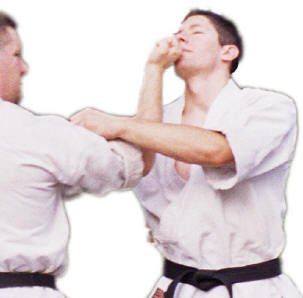 URAKEN UCHI
URAKEN UCHI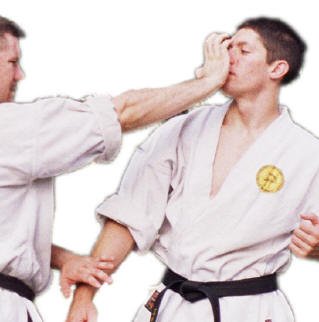 TEISHO UCHI
TEISHO UCHI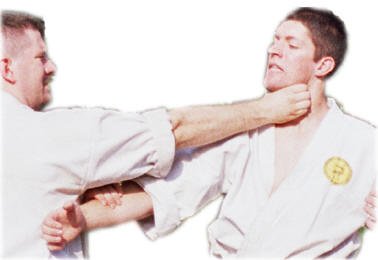 NUKI-TE
NUKI-TE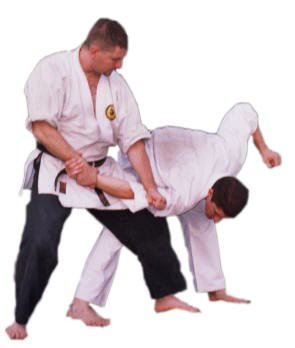 KOMA NAGE
KOMA NAGE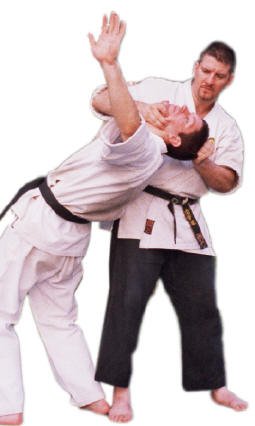 KUBIWA
KUBIWA SAKUTSACHI
SAKUTSACHI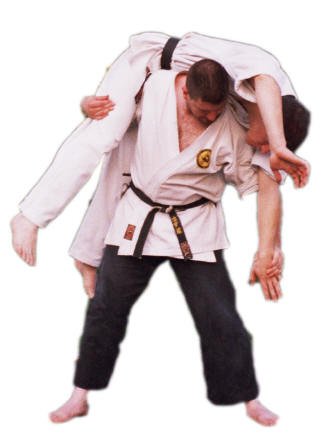 KATAWAGURUMA
KATAWAGURUMA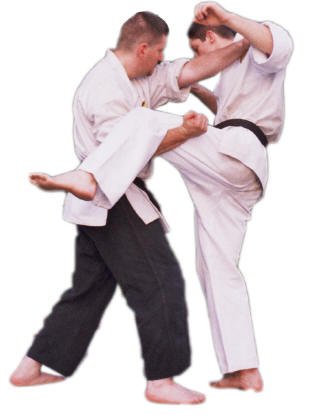 YORIDAMA
YORIDAMA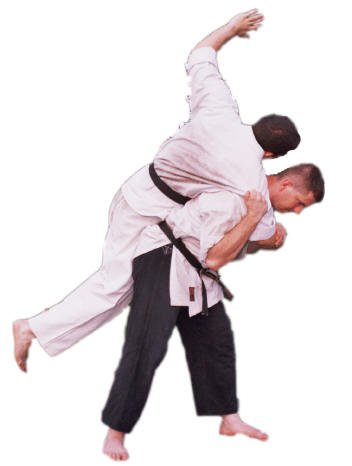 TANI OTOSHI
TANI OTOSHI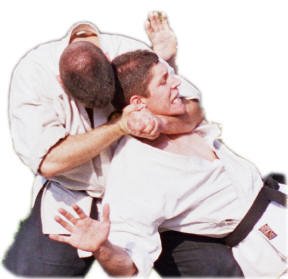 SHIME
SHIME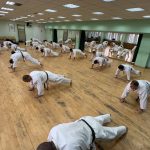
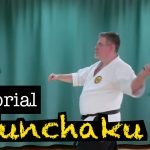

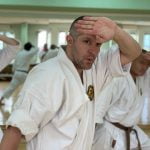

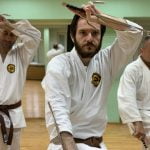
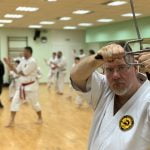

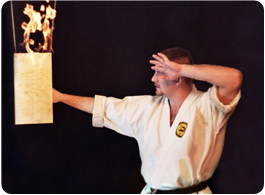

hello
that was indeed informative.though i am a bit skeptical about the references given.i ve been practicing the shorin ryu seibukan style for 2 years and i haven’t come across any teisho uchi in seisan and anan .